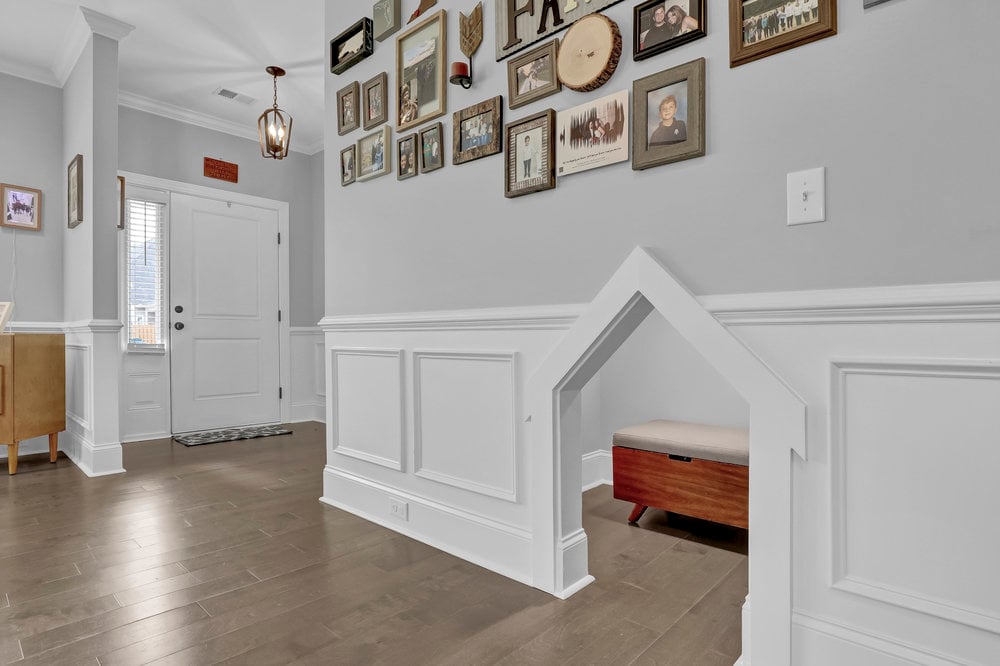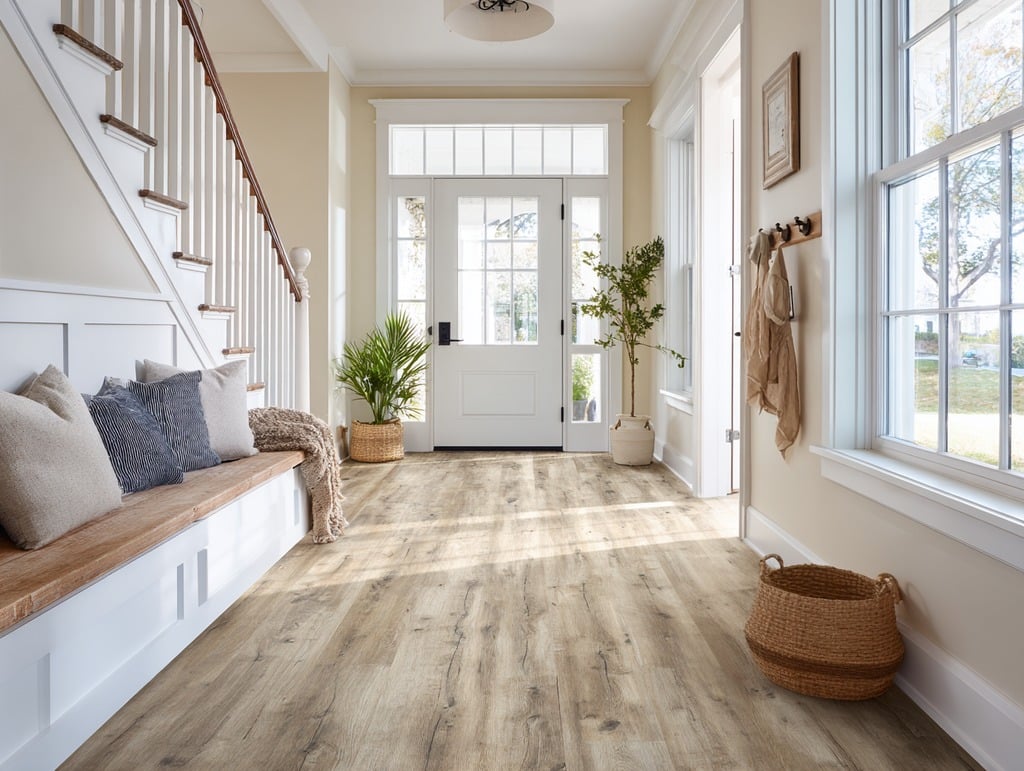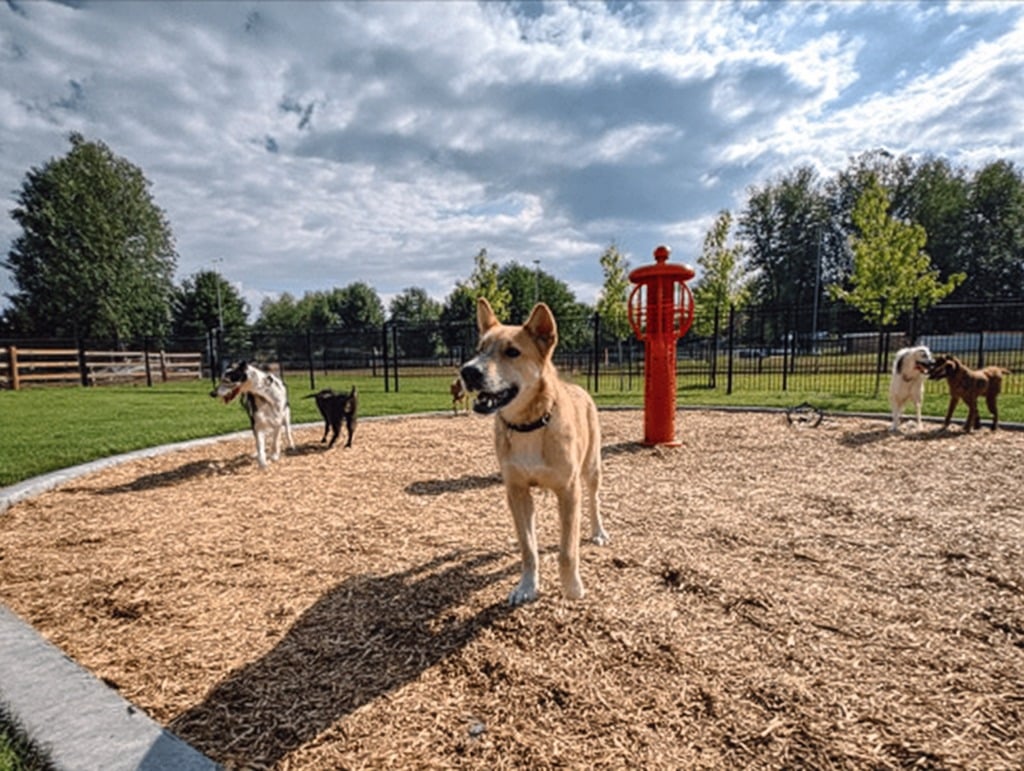When it comes to buying a home, every buyer brings their own unique set of priorities to the table—school districts, commute times, neighborhood vibes, square footage, price, and more. But if you’re one of the millions of Americans who own a pet, your house hunt will likely come with a few additional must-haves. According to the American Pet Products Association (APPA), nearly 70% of U.S. households own a pet—and for many of us, these four-legged companions are more like family than animals.
Whether you have a playful puppy, a senior cat, or a whole mini-zoo of fur and feathers, buying a home that fits both your needs and your pet’s can make a huge difference in your daily comfort, safety, and happiness. Here are the top features to prioritize when buying a home with pets—and a few tips that could save you time, stress, and money down the road.
1. Yard Space: Room to Roam (and Zoom!)
Let’s start with the obvious: outdoor space. If you have dogs—especially large breeds or high-energy pups—then a yard can be a game-changer. A private, fenced-in yard offers a safe space for your pet to run, play, and do their business without the need for constant walks or leash time.
What to look for:
-
Fencing: A secure, sturdy fence is key. Not all fencing is created equal; chain link may be secure but lacks privacy, while wooden fencing is solid but may need maintenance. Check for gaps or loose panels that could pose a risk.
-
Size and shape: A flat, spacious yard gives more room for play, but even smaller yards can work if well-designed. Avoid steep slopes or densely wooded areas that could hide hazards like snakes or toxic plants.
-
Pet-friendly landscaping: Is the yard free of toxic plants (like azaleas or sago palms)? Is there a shaded area for hot days? Is the grass in good condition, or are there thorny bushes and sharp gravel that could hurt paws?
-
Water access: Bonus points if there’s a hose spigot nearby for washing muddy paws or filling water bowls.
Tip: If the home doesn’t already have a fence, factor in the cost of installing one. In some areas, that could range from $2,000–$10,000 depending on materials and yard size.
2. Durable, Pet-Friendly Flooring: Skip the Carpet
Let’s talk floors. Pets can be hard on them—scratching hardwood, staining carpets, and shedding fur everywhere. Choosing a home with the right kind of flooring can make cleanup easier and extend the life of your home’s interior.
Top flooring choices for pet owners:
-
Luxury vinyl plank (LVP): Waterproof, scratch-resistant, and easy to clean—LVP is a top choice for many pet owners.
-
Tile or stone: Virtually indestructible and great for warm climates. Tile is also hypoallergenic, which is a win if your pet sheds a lot.
-
Laminate: More affordable than hardwood but still scratch-resistant. However, not all laminate is waterproof, so check specs carefully.
-
Avoid carpet: While it’s cozy, carpet traps fur, dander, and odors—and can be a nightmare to keep clean with pets. If you fall in love with a home that has carpet, be prepared for frequent vacuuming or consider replacing it down the line.
Tip: Darker-colored flooring tends to show less fur and fewer paw prints, while high-gloss finishes show more scratches. Matte or textured finishes are your friend.
3. Proximity to Parks, Trails, and Pet Services
One of the joys of pet ownership is being able to explore the world together. Whether that means taking a brisk walk through the neighborhood, letting your pup play at a local dog park, or hitting a nearby hiking trail, location matters more than you might think.
Neighborhood features to look for:
-
Dog parks or green spaces: Check if the area has off-leash dog parks or spacious public parks with dog-friendly areas. These offer great places to socialize and exercise your pup.
-
Sidewalks and safe streets: Wide sidewalks, pedestrian-friendly streets, and slow traffic zones are ideal for daily walks.
-
Nearby vets, groomers, and pet stores: Having a trusted veterinarian or groomer close by is convenient—and in an emergency, proximity could be critical.
-
Pet-friendly businesses: Breweries with dog patios, pet boutiques, and cafés with outdoor seating can elevate your lifestyle and let you include your pet in more activities.
Tip: Use Google Maps or apps like BringFido to scope out the area before buying. You can even ask your real estate agent to prioritize homes near specific amenities.
4. HOA Rules and Restrictions: Read the Fine Print
If you’re considering a property that’s part of a homeowners association (HOA), be sure to dig into the community rules—especially when it comes to pets. Some HOAs are very pet-friendly, but others impose strict limitations.
Things to check in the HOA bylaws:
-
Pet limits: Some communities restrict the number of pets you can have—or ban certain species altogether (like chickens or exotic pets).
-
Breed restrictions: Certain dog breeds may be banned, even if they’re well-behaved. This is especially common in condos or townhome communities.
-
Leash rules and noise complaints: Make sure the leash laws, quiet hours, and waste disposal policies align with your lifestyle.
-
Fence rules: Some HOAs don’t allow fences, or only permit specific materials or heights. That could impact your ability to create a safe outdoor space for your pet.
-
Shared outdoor spaces: If you’re buying in a condo or townhouse community, you may need to share green space. Find out how that space is regulated and whether there’s a designated pet area.
Tip: Always request a copy of the HOA’s Covenants, Conditions & Restrictions (CC&Rs) before making an offer. Your real estate agent can help you interpret anything that seems unclear.

41 Milano Court, Hampstead, NC 28443 – Villages at Olde Point
5. Home Layout and Interior Features: Think Like Your Pet
Pets spend most of their time indoors, so make sure the layout and design of the home work for them, too. For instance, a three-story townhome might not be ideal for senior dogs with joint issues. A home with an open floor plan might offer more space for zoomies. And pet-specific features—like built-in feeding stations, pet doors, or a mudroom—can add tremendous value for daily life.
Interior elements to consider:
-
Staircases: If your pet is older or has mobility issues, look for homes with minimal stairs or a single-story layout.
-
Windows and natural light: Cats especially love sunny spots to nap. Window perches or low sills are a plus.
-
Mudrooms or laundry areas: These make great pet zones for feeding, bathing, or setting up a litter box.
-
Built-in nooks or under-stair spaces: Perfect for a cozy crate or bed.
-
Floor plan flow: An open-concept layout means you can supervise pets easily and they can stay close without feeling confined.
Tip: You can always retrofit features like pet doors, feeding stations, or custom storage later. But buying a home with a good base layout will make those updates easier and more affordable.
6. Noise and Neighborhood Dynamics: Peace and Quiet Matters
Some pets are more sensitive to their environment than others. Dogs may bark at frequent foot traffic, while cats may feel anxious near loud roads. If your pet is skittish, reactive, or noise-sensitive, you’ll want to pay attention to the neighborhood atmosphere.
Red flags to watch for:
-
Busy roads or intersections: Not only can these be dangerous, but they’re often noisier and more stressful for animals.
-
High-density areas: If your dog is reactive to other dogs or people, tight neighborhoods with lots of passersby might pose challenges.
-
Construction zones or flight paths: Ongoing construction or proximity to an airport can cause ongoing anxiety for pets (and owners!).
Tip: Visit the home during different times of day—morning, afternoon, and evening—to get a feel for the noise level and activity in the area.
7. Resale Value for Pet-Friendly Features
Even if you’re buying with pets in mind now, think long-term. Features like a fenced yard, durable flooring, and pet-friendly amenities can actually boost resale value. Many buyers today are pet owners themselves and may be willing to pay more for a home that caters to animal companions.
According to a report from the National Association of REALTORS®, 43% of pet owners would be willing to move to better accommodate their pets. In other words, homes that are pet-friendly aren’t just good for you—they can be great for resale.
Final Thoughts: Make Pets Part of the Process
When you’re making one of life’s biggest purchases, it’s only natural to think about the family members who’ll be sharing that space with you—including the furry ones. A pet-friendly home can enhance your lifestyle, reduce stress, and create a safer and more harmonious environment for everyone under your roof.
Before you buy, talk with your real estate agent about your pet’s specific needs. Whether it’s a fenced-in yard for your golden retriever, a sunny windowsill for your tabby, or an HOA that won’t hassle you over pet size, a little planning can go a long way in finding the perfect home for both humans and their beloved companions.
Because at the end of the day, home is where the dog hair sticks to everything but the dog.
Need help finding a pet-friendly home in the Wilmington, NC area?
Our team at The Cameron Team has helped countless families find homes that fit their two-legged and four-legged needs. We know the communities, we know the rules, and we’re here to help you and your furry friends feel at home. Reach out to us today—we’d love to help you find your next place to wag your tail.








